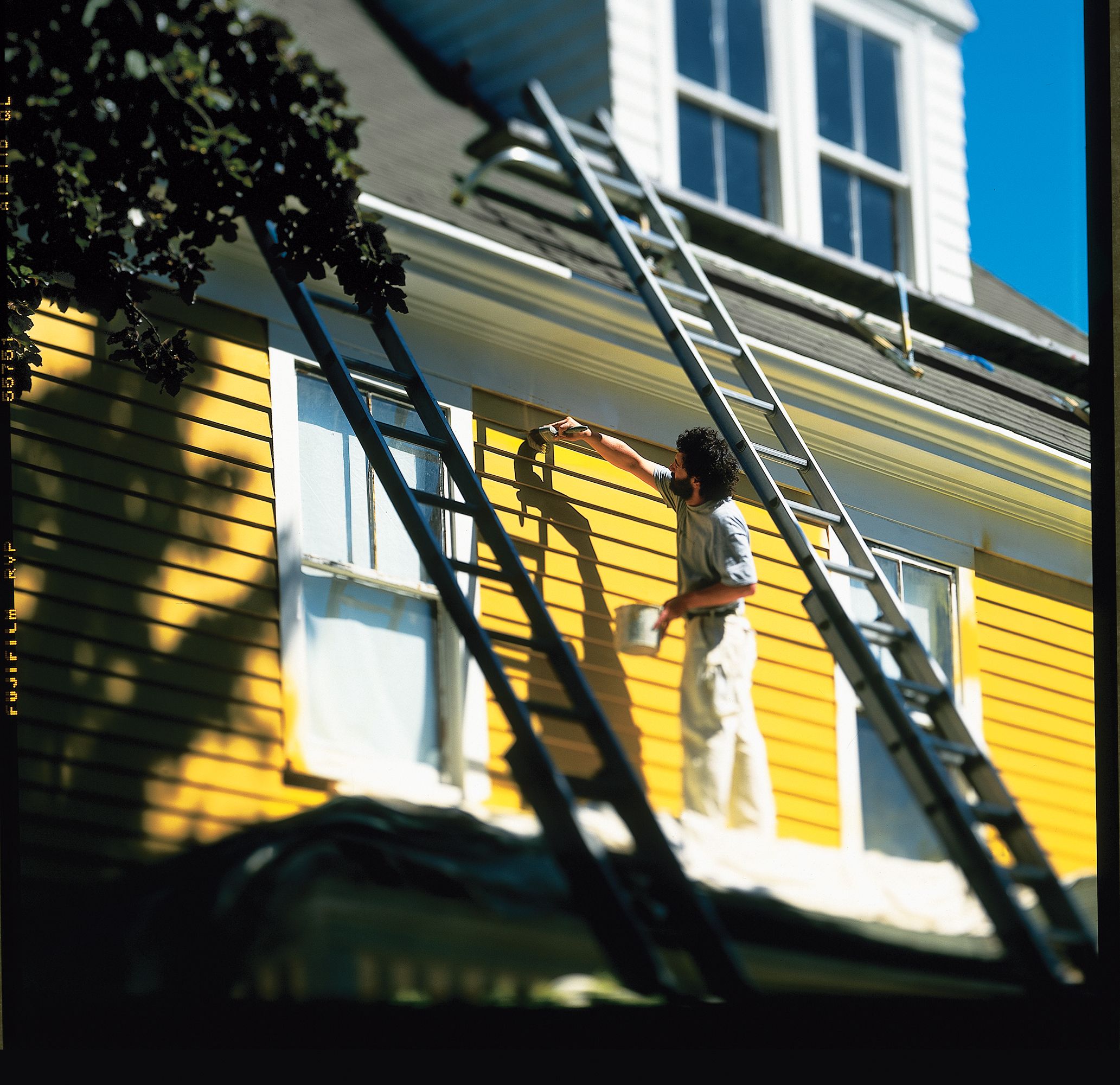Exterior paint is more than cosmetic. It’s a crucial protective barrier against the elements, shielding your property from harsh weather conditions, UV radiation, and moisture. Choosing the right exterior paint and applying it correctly can significantly extend the life of your siding, trim, and other exterior surfaces.
This guide will walk you through everything you need to know about exterior paint, from understanding different formulations to selecting the perfect color scheme for your home.
Exterior Paint Formulations
The paint formulation you choose can significantly impact durability, appearance, and ease of application. Modern advances in paint technology have led to a variety of high-quality options for homeowners.
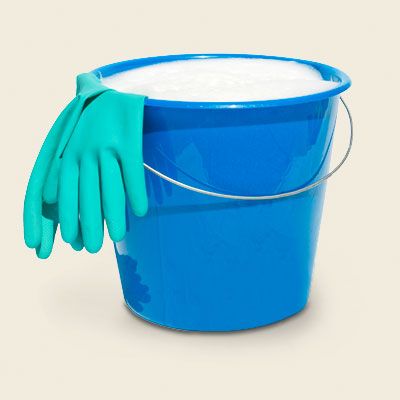
Acrylic Paint
Acrylic paint is widely considered the best choice for exterior applications. Acrylics offer superior durability, flexibility, and color retention compared to other formulations. These paints are breathable, allowing moisture to escape, which helps prevent peeling and blistering. Acrylic paints adhere well to most surfaces, including wood, vinyl, metal, and masonry.
Latex Paint
Latex paints are water-based and easy to clean up. While not as durable as 100% acrylic formulations, quality latex paints still offer good performance for exterior use. They dry quickly and are less prone to yellowing over time compared to oil-based paints. Latex paints are a popular choice for their ease of use and environmental friendliness.
Oil-Based Paint
While less common today due to environmental regulations and the improved performance of water-based alternatives, oil-based paints still have their place in exterior painting. They offer excellent adhesion, durability, and a smooth finish that’s hard to match with water-based paints. Oil-based paints are particularly useful for doors, wrought iron, and trim details that require a high-gloss, durable finish.
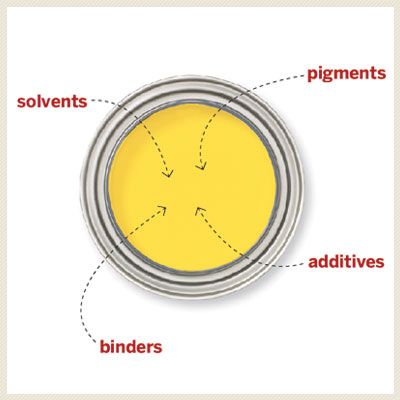
Choosing the Right Exterior Paint Finish
After choosing the formulation, you’ll need to pick the right paint finish. The finish or sheen of your exterior paint not only affects your home’s appearance but also its performance and longevity. Different finishes suit different surfaces and environmental conditions.
Flat or Matte Finish
Flat finishes have no shine and are excellent at hiding surface imperfections. They’re ideal for siding, especially if it has any damage or unevenness. However, flat finishes can be more challenging to clean and may show dirt more readily than glossier options.
Satin Finish
Satin finishes offer a slight sheen and are a popular choice for exterior siding. Satin is best for siding because it’s a low-reflective finish that’s good at hiding surface imperfections. It has a slight gloss, so it stays cleaner, is more easily washed, and stands up to abrasion better than flat or matte paints.
Semi-Gloss and Glossy Finish
Semi-gloss and glossy finishes provide the most durability and are easiest to clean. They’re ideal for trim, doors, and other high-touch areas. High gloss is resilient and dirt-repellent, adding richness and depth to colors. However, it also magnifies surface imperfections and requires skillful application. Use it sparingly; best for shutters, doors, and surfaces you touch or come in close proximity to.
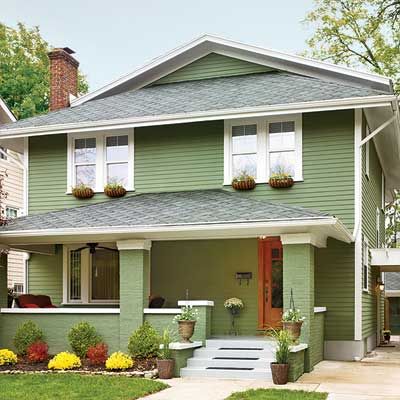
Exterior Paint Costs
On average, the cost of painting the exterior of your home on your own is between $500 and $1,000. Factors like your home’s size and paint type can affect this price. The following table breaks down the average cost of materials for painting the exterior of your home.
| Material | Average Cost |
| Brushes | $45 |
| Buckets | $3.50 |
| Caulk | $5 per tube |
| Drop cloths | Up to $20 per cloth |
| Masking tape | $3.50 per roll |
| Rollers and rolling handles | $22 |
| Sandpaper | $3.50+ |
| Scrapers | $17.50 |
| Oil-based paint | $20–$60 per gallon |
| Exterior latex and acrylic paint | $20–$50 per gallon |
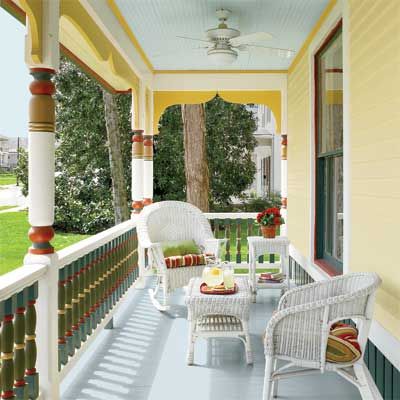
Factors Affecting Exterior Paint Longevity
The longevity of your exterior paint job depends on several factors, including the quality of the paint, the preparation of the surface, and your environmental conditions.
Climate Considerations
Your local climate greatly impacts how long your paint job will last. Homes in areas with extreme temperature fluctuations, high humidity, or intense UV exposure may require more frequent repainting. Consider climate-specific paints that offer enhanced protection against your region’s particular weather challenges.
Surface Preparation
Proper surface preparation is crucial for a long-lasting paint job. This includes cleaning the surface thoroughly, repairing any damage, and priming when necessary. Paint adheres best to clean, dry surfaces. First, wash your desired surface to remove dirt and mildew, then scrape and sand loose paint down to the substrate or a smooth base layer. This method creates ideal conditions for paint adhesion and reduces the likelihood of chipping, peeling, and other problems.
Paint Quality
Investing in high-quality paint can significantly extend the life of your exterior paint job. Premium paints contain better resins, pigments, and additives that provide superior adhesion, color retention, and weather resistance. While they may cost more upfront, they can save money in the long run by requiring less frequent repainting.
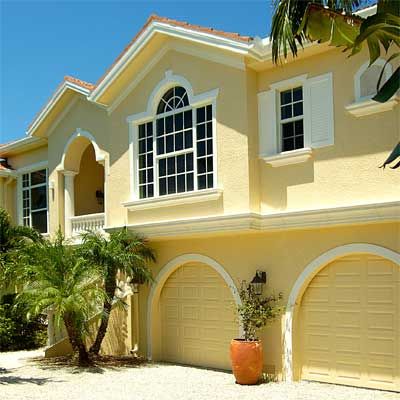
Essential Tools and Materials for Exterior Painting
To achieve a professional-looking exterior paint job, you’ll need the right tools and materials. Here’s a list of essentials:
- Paint brushes and rollers
- Paint sprayer (optional, but good for large areas)
- Scrapers and sandpaper
- Caulk and caulking gun
- Primer
- Painter’s tape
- Drop cloths or newspaper
- Ladder or scaffolding
- Safety equipment (goggles, masks, gloves)
- Cleaning supplies
Having these tools on hand will ensure you’re prepared for every step of the painting process, from preparation to final touches.

Step-by-Step Guide to Painting Your Home’s Exterior
Painting your home’s exterior is a significant undertaking, but with proper planning and execution, you can achieve professional-quality results. Follow these steps for a successful exterior paint job.
Preparation and Cleaning
Begin by thoroughly cleaning the exterior surfaces. Use a pressure washer or a stiff brush with a cleaning solution to remove dirt, mildew, and loose paint. Repair any damaged areas, fill holes, and sand rough spots. Allow the surface to dry completely before proceeding.
Priming the Surface
Apply primer to bare wood, new siding, or areas where old paint has been removed. Primer grips the surface and helps the paint adhere to the exterior of your home.
Applying the Paint
Start at the top of the house and work your way down, painting in sections to maintain a wet edge. Use brushes for trim and detail work and rollers or a sprayer for larger areas. Apply at least two coats, allowing proper drying time between applications. Stay in the shade as much as possible. Start at the top and work down. Do the siding before tackling the trim.
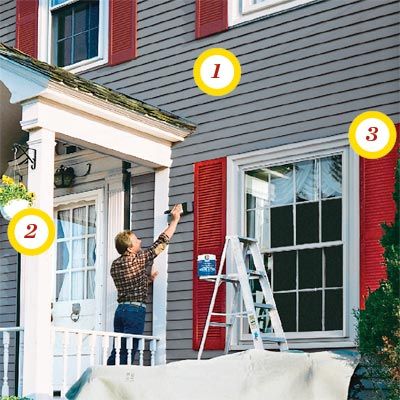
Color Selection for Exterior Paint
Choosing the right color scheme for your home’s exterior can enhance its architectural features and increase curb appeal. Keep these factors in mind when selecting your palette.
Your Home’s Architecture
Your home’s architectural style can guide your color choices. For example, Victorian homes often feature bold, contrasting colors, while Craftsman-style homes typically use earth tones. Research color schemes that are historically accurate or complementary to your home’s style to ensure a cohesive look.
Neighborhood and Landscape Influences
Take cues from your surroundings when selecting colors. Survey your block. Painting your house a tropical turquoise among a sea of gray and beige will make it stand out—in a bad way. A muted blue or green could be a better fit, but still distinguish it. Choosing colors that harmonize with neighboring homes and the natural landscape can help your house blend in while still showcasing its unique charm.
Multi-Hue Schemes
Using multiple colors can highlight your home’s best features. Think of your home as the sum of three parts: the body (siding), the trim (window and door casings, fascias), and the movable elements (windows, doors, and shutters). Give each part its own color to create a cohesive and visually appealing look.
Specialty Exterior Paints and Coatings
Advancements in paint technology have led to the development of specialty paints designed to address specific needs and challenges in exterior painting.
No-Fade Paints
For areas with intense sun exposure, no-fade paints offer enhanced UV resistance. NeverFade contains Kynar Aquatec, a water-based resin guaranteed to resist UV degradation for 15 years. This ensures that your home maintains its vibrant color and looks great for longer.
Masonry-Specific Paints
When painting brick, stone, or stucco, it’s crucial to use breathable paints that allow moisture to escape. Any coating that goes over brick, stone, or stucco has to allow water vapor to pass through it. This helps prevent issues like blistering and peeling, which can occur when moisture gets trapped beneath the paint.
Eco-Friendly Options
There are now eco-friendly paint options for environmentally conscious homeowners. These paints have low or zero VOCs (Volatile Organic Compounds) and are made from natural or recycled materials. They offer a safer choice for your family and the environment without compromising on quality or durability.
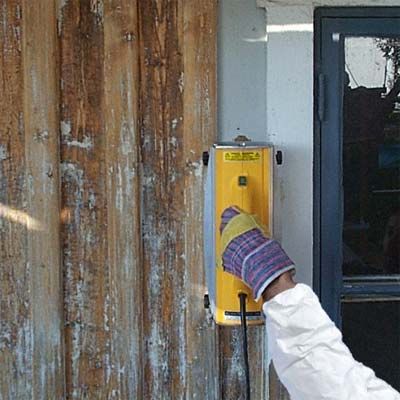
Maintaining Your Exterior Paint Job
Regular maintenance will keep your exterior paint job looking great. Wash your home’s exterior annually to remove dirt and prevent mildew growth. Inspect the paint surface regularly for signs of wear or damage and touch up as needed. Addressing small issues promptly can prevent more extensive damage and prolong the time between full repaints.
Troubleshooting Common Exterior Paint Problems
Even with proper application and maintenance, exterior paint can sometimes develop issues. Knowing how to identify and address these problems can help maintain your home’s appearance and protection.
Peeling and Flaking
Peeling paint is often caused by moisture penetration or poor surface preparation. To fix this issue, scrape away loose paint, sand the area smooth, prime, and repaint. Ensure proper drainage and ventilation to prevent future moisture issues.
Fading and Chalking
Fading is typically caused by sun exposure, while chalking (a powdery residue on the surface) results from paint breaking down over time. Both issues can be addressed by cleaning the surface and applying a new coat of high-quality, fade-resistant paint.
Mildew and Mold Growth
Mildew and mold thrive in damp, shaded areas. Clean affected areas with a solution of one part bleach or vinegar to three parts water, rinse thoroughly and allow to dry completely before repainting with a mildew-resistant paint.
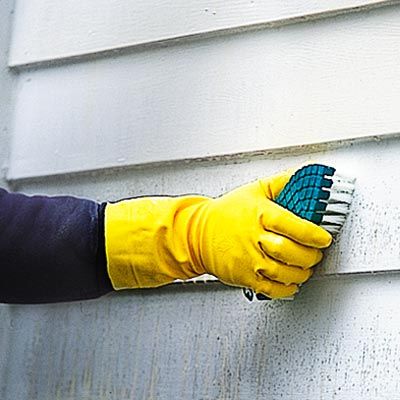
When To Hire a Professional Painter for Your Exterior
While many homeowners can successfully paint their home’s exterior, there are situations where hiring a professional is advisable. Consider professional help if the following apply:
- Your home is very large or has multiple stories
- There’s significant prep work required, including repairs or lead paint removal
- You lack the time or physical ability to complete the job
- You want to ensure a flawless finish
Professional painters have the experience, equipment, and expertise to handle complex painting projects efficiently and effectively. They can save you time and hassle and ensure that the job is done to the highest standard.
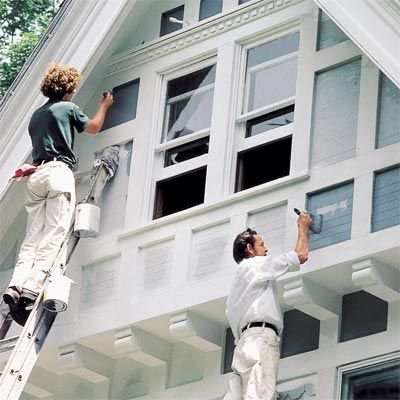
Our Conclusion
Exterior paint is a crucial investment in your home’s protection and appearance. By understanding the different types of paint, choosing the right finish and colors, and following proper application techniques, you can achieve a beautiful and long-lasting look for your home. Regular maintenance and prompt attention to any issues will help preserve your paint job for years to come.
While DIY painting can be rewarding, we recommend calling in professionals for complex or challenging projects. Whether you tackle the job yourself or hire experts, a well-executed exterior paint job will enhance your home’s curb appeal and provide essential protection against the elements.
